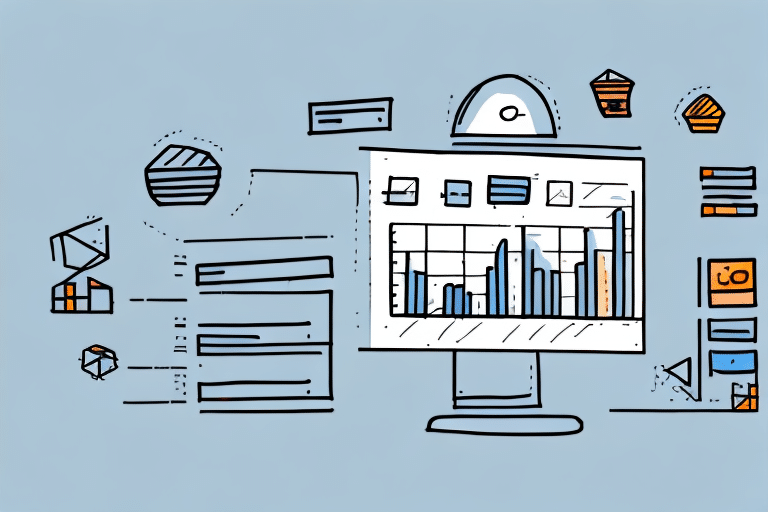Understanding EBITDA and Its Significance in E-Commerce
EBITDA, an acronym for Earnings Before Interest, Taxes, Depreciation, and Amortization, is a pivotal financial metric employed by businesses across various industries to assess profitability. By excluding specific expenses, EBITDA offers a clearer view of a company’s operational efficiency and core profitability. In the e-commerce sector, where margins can be tight and competition fierce, EBITDA serves as a crucial indicator for tracking performance and guiding strategic decisions.
As of recent reports, the global e-commerce market is projected to reach $6.54 trillion by 2023, emphasizing the importance of robust financial metrics like EBITDA in navigating this expansive landscape (Statista).
What is EBITDA and Why It Matters for E-Commerce Businesses
At its essence, EBITDA measures a company's ability to generate earnings from its operations by excluding non-operational expenses such as interest, taxes, depreciation, and amortization. This exclusion allows businesses to focus on their operational performance without the noise of financial and accounting decisions.
Key Components of EBITDA
- Interest: Costs associated with borrowed funds.
- Taxes: Government levies on income.
- Depreciation: Allocation of the cost of tangible assets over their useful lives.
- Amortization: Similar to depreciation but for intangible assets.
By isolating these factors, EBITDA provides a standardized measure that enables e-commerce businesses to compare profitability across different companies, regardless of their size, capital structure, or tax environments.
Calculating EBITDA: A Step-by-Step Guide
Understanding how to calculate EBITDA is fundamental for any business owner or financial analyst in the e-commerce space. Here's a straightforward approach:
- Start with Revenue: The total income generated from sales.
- Subtract Cost of Goods Sold (COGS): Direct costs attributable to the production of goods sold.
- Add Depreciation and Amortization: Non-cash expenses that need to be reintegrated.
- Subtract Operating Expenses: Includes salaries, rent, marketing, and other overheads.
The formula can be expressed as:
EBITDA = Revenue - COGS + Depreciation + Amortization - Operating Expenses
It's important to note that while EBITDA is a valuable metric, it should be used in conjunction with other financial indicators to gain a comprehensive understanding of a business's financial health.
Interpreting EBITDA in the Context of E-Commerce
A higher EBITDA typically signifies better operational profitability, making it a valuable tool for benchmarking against competitors. However, it's crucial to analyze EBITDA trends over time rather than relying on a single data point.
Factors Influencing EBITDA
- Revenue Fluctuations: Seasonal sales peaks or drops can impact EBITDA.
- Operating Expenses: Increases in marketing spend or logistics costs can reduce EBITDA.
- Inventory Management: Efficient inventory turnover can positively affect EBITDA.
For a detailed analysis, consider using EBITDA alongside metrics like net income and cash flow to assess overall financial performance (Investopedia).
EBITDA vs. Cash Flow: Understanding the Difference
While EBITDA provides insights into operational profitability, it doesn't account for cash flow nuances. A company might exhibit a strong EBITDA but suffer from cash flow issues due to high accounts receivable or inventory levels.
Improving Cash Flow While Maintaining EBITDA
- Optimize Inventory Management: Reduce excess stock to free up cash.
- Enhance Payment Terms: Negotiate better terms with suppliers and customers to improve cash flow timing.
- Monitor Receivables: Implement efficient billing and collections processes.
Tracking both EBITDA and cash flow provides a more comprehensive view of a business's financial stability.
Pros and Cons of Using EBITDA as a Performance Metric
EBITDA offers several advantages but also has its limitations, especially in the dynamic e-commerce environment.
Advantages
- Comparability: Facilitates comparison across companies by eliminating the effects of financing and accounting decisions.
- Simplicity: Easy to calculate and understand.
- Focus on Operations: Highlights core business profitability without non-operational expenses.
Disadvantages
- Excludes Capital Expenditures: Doesn't account for investments in equipment or technology.
- Potential for Manipulation: Companies might adjust expenses to present a more favorable EBITDA.
- Ignores Cash Flow: Doesn't provide insights into actual cash generation.
Given these pros and cons, it's advisable to use EBITDA alongside other financial metrics for a balanced assessment (Forbes Advisor).
Benchmarking EBITDA Against Competitors
Utilizing EBITDA to compare your e-commerce business with industry peers can uncover strengths and areas for improvement. Here's how to approach benchmarking:
Steps for Effective Benchmarking
- Identify Competitors: Select businesses of similar size and market focus.
- Gather Data: Collect EBITDA figures from financial reports or industry databases.
- Analyze Differences: Determine why discrepancies exist—consider factors like cost structure or revenue streams.
- Implement Improvements: Use insights to optimize operations and enhance profitability.
Tools like Bloomberg and MarketWatch can provide valuable financial data for benchmarking purposes.
Strategies to Enhance EBITDA Performance in E-Commerce
Improving EBITDA involves both increasing revenues and managing expenses effectively. Here are key strategies tailored for e-commerce businesses:
Optimizing Pricing Strategies
Implement dynamic pricing models to adjust prices based on demand, competition, and other market factors. Tools like Shopify can assist in automating this process.
Reducing Overhead Costs
Streamline operations by automating tasks, negotiating better terms with suppliers, and minimizing unnecessary expenses.
Enhancing Operational Efficiency
Invest in technologies that improve logistics, such as inventory management systems or advanced analytics platforms (Investopedia).
Balancing Short-Term Savings with Long-Term Growth
Ensure that cost-cutting measures do not hinder future growth opportunities. Focus on sustainable improvements that support long-term profitability.
Revenue Growth's Impact on EBITDA Margins
Sustained revenue growth is a fundamental driver of higher EBITDA margins. Here's how growth strategies can enhance EBITDA:
Expanding Product Offerings
Diversifying your product range can attract new customers and increase sales volume.
Improving Customer Experience
Enhancing website usability, customer service, and personalization can lead to higher customer retention and repeat purchases.
Innovative Marketing Strategies
Utilize data-driven marketing tactics to reach targeted audiences more effectively, thereby boosting conversion rates.
According to a report by McKinsey, companies that effectively leverage growth strategies tend to see a significant improvement in their EBITDA margins.
Avoiding Common EBITDA Calculation Mistakes
Accurate EBITDA calculation is crucial for reliable financial analysis. Here are common pitfalls to avoid:
Overreliance on EBITDA
Using EBITDA as the sole performance metric can obscure critical financial aspects like cash flow and debt levels.
Ignoring One-Time Expenses
Excluding one-time or non-recurring expenses can distort the true operational performance.
Inconsistent Calculation Methods
Ensure consistency in how EBITDA is calculated across periods and compared companies to maintain reliability.
Not Considering Industry Variations
Different e-commerce niches may have varying EBITDA norms; always contextualize your metrics within your specific industry segment.
Conclusion: Leveraging EBITDA for E-Commerce Success
EBITDA remains a vital metric for evaluating and enhancing the profitability of e-commerce businesses. By understanding its calculation, interpreting its implications, and integrating it with other financial metrics, businesses can gain invaluable insights into their operational efficiency and financial health. Employing strategic measures to optimize EBITDA can position your e-commerce venture for sustained growth and competitiveness in a rapidly evolving market.








